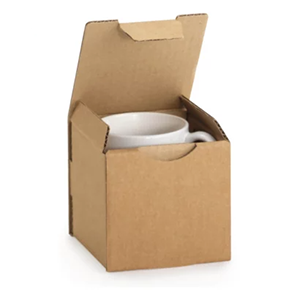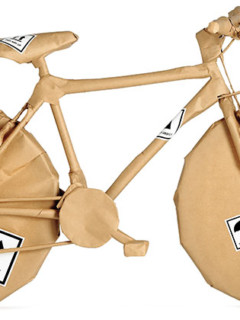Sustainability has become one of the strongest trends in the packaging industry. The focus is on environmentally friendly packaging, renewable raw materials and multi-purpose suitability. Wood wool meets all these criteria and is therefore ideal for natural cushioning. The environmentally friendly padding protection for sensitive products is also used in many other areas: Wood wool is a real all-rounder and can be used almost universally.
What is wood wool?
Given the wide range of applications, the question arises as to what wood wool actually is? Wood wool is a material with a long tradition. It is loose and natural wood wool threads that are finely planed and can be up to half a metre long. Today, about 200 different types of wood wool are produced. Depending on the type, the properties and thus the area of application differ. However, the most important properties of wood wool are its robust yet flexible nature, the fact that it is virtually dust- and splinter-free, its durability and biological structure, and the antibacterial and antistatic properties of wood. However, all types of wood wool have one thing in common: they are free of wood preservatives and additives of any kind – and therefore great for natural upholstery.
Applications of wood wool
Wood wool has many uses: in animal husbandry as bedding, for decorative purposes, food storage, as a biological fire starter, but also as an insulating and filling material and for insulation in building construction and civil engineering. The fine wood wool is used as a filling material for soft toys, but also decoratively and naturally cushions products in gift packaging and is used in the design of flower arrangements. Furthermore, wood wool is approved for use in the food sector and in animal husbandry and, due to its good insulating properties, is also used as an insulating and filling material and for insulation in civil engineering and serves as a biological fire starter.
Wood wool for packaging – good and natural padding
To pack and ship products safely, padding is often necessary to prevent damage during transport. Wood wool offers environmentally friendly cushioning protection for delicate products such as wine bottles, ceramics or glass. The wood shavings are extremely productive, a high protective effect is achieved even with a small amount. For our wood shavings we use coniferous woods (spruce, Scots pine, larch) and hardwoods such as copper beech, ash or poplar. The logs, certified according to FSC (Forest Stewardship Council) and PEFC (Programme for the Endorsement of Forest Certification) are debarked and air-dried for at least 16 months.
Due to its nature, wood wool is also suitable for hygiene products and foodstuffs. It can also be used for export without hesitation: wood wool is exempt from the ISPM15 standard and is therefore permitted for export even without certificates.
Animal wood wool – soft and absorbent
In animal husbandry, wood wool is used as bedding. The natural material is absorbent and binds urine and moisture, thus ensuring hygiene in the small animal home. Wood wool is the ideal material for setting up an insect hotel and for breeding insects. Due to its antibacterial properties, extra-fine wood wool is recommended for cleaning the udders of cows, goats and sheep.
Strawberry wood wool – natural pest control
Wood wool is used as a pesticide not only for strawberries but in agriculture in general. The wood wool prevents the plant from coming into contact with the soil, thus protecting it from dirt, moisture and frost. Because beneficial insects prefer to use the natural material as nesting material, natural pest control takes place. The essential oils of the resin also keep slugs away.
Insulation with wood wool – resistant and thermally conductive
Spruce or pine wood is usually used for insulation. The insulation boards made of wood wool are bound and preserved by adding a composite material such as magnesite. The insulation boards can be used universally, e.g. in the interior of the wall, the roof and in ceilings. Due to the open-pored structure of the wood, the wood wool absorbs moisture and thus ensures a balanced indoor climate. At the same time, wood wool is resistant to infestation by mould or fungi. Due to its good heat storage capacity, wood wool insulation provides good protection against heat in summer and ensures that the heat stays in the house in winter.
How is wood wool made?
The production of wood wool dates back to the 1840s in the USA. Forty years later, wood wool was then also produced by machine in Europe. Special wood wool machines are needed for the production. These are so-called chip-removing planing machines.
Debarked and air-dried logs form the basic material. After drying, the wood still has a residual moisture content of about 13 percent. The following video demonstrates how wood wool is produced with a machine from 1900:
Each tree species has different biological, chemical and physical properties. In order to process the respective wood ideally, the best possible recipe is sought depending on the intended use. Even if the types of wood wool hardly differ externally, the selection of the wood mix as well as the length, width and thickness of the individual wood wool threads is decisive for the properties and thus the intended use.
Applications of wood wool
In animal husbandry as bedding, for decorative purposes, food storage, as a biological fire starter but also as insulation and filling material and for insulation in structural and civil engineering. The fine wood wool is used as a filling material for soft toys, but also decoratively cushions products in gift packaging and is used in the design of flower arrangements. Furthermore, wood wool is approved for use in the food sector and in animal husbandry and, due to its good insulating properties, is also used as an insulating and filling material and for insulation in civil engineering and serves as a biological fire starter.
Sustainable wood wool instead of plastic
Due to the positive properties of wood wool, the high-quality wood material has a wide range of products. In the packaging industry, the natural material was displaced by plastic for some time. But the rethinking towards sustainable products for environmental protection ensures a high demand for the cushioning material, because wood wool is the most environmentally friendly packaging material of all: it is made from 100 per cent untreated wood, can be used several times and then composted.
The flexible yet resistant material provides optimal, natural cushioning, especially for fragile items, and prevents transport damage.
When shipped to the end customer, wood wool not only ensures a sustainable image, but also puts the packaged product, such as a wine bottle, in the right light: wood wool is decorative and presents the product in a high-quality and stylish package.















